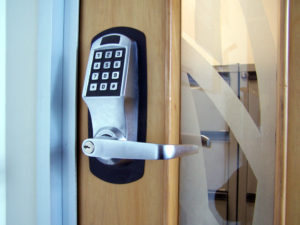What is Physical Security?
I hate keys. This is largely due to the fact that I lose things far too often. Keys are small, get lodged in the far recesses of my pockets, and are usually on my bedroom dresser instead of in my hand when I get to the office. Yet it’s important to lock things up to keep them secure. My grandfather once said “locks keep honest people honest”. There’s probably some truth to that……his cryptic sayings usually made sense once I gave them some thought. And as the case is with many things, technology has stepped in to improve this, and other areas of physical security.
Physical security technology for home and business computers is often overlooked, but shouldn’t be taken for granted. With the majority of computers, once you have the system in your physical possesion, gaining access to the data can be pretty simple. You could have the greatest passwords in the world, but these can be disabled using the right tools or methods. Unfortunately, the extra steps of locking things up is often enough to deter people from doing it at all.
The traditional lock and key dates back thousands of years. As simple mechanical devices, they allowed the owner to secure possessions and limit access to those with the key. But there are limitations; locks can be picked, require the key be in possession of the user, and in some cases be duplicated rather easily. Technology has allowed us to change this.
Door Security for Home and Business
Electronic locks for your home are available at most hardware stores, or online. The simplest electronic locksets offer a touchpad with key backup. Simply enter a pre-programmed code to unlock the door. More advanced locksets offer wireless connectivity. When your smartphone is near, the door unlocks automatically. Want to let a friend in? Send them an “eKey” which can be configured to allow access during a limited time window. It’s even possible to setup alerts when someone unlocks the door, and send you a text message or email. This can be handy when you have kids getting off the bus before you get home, and you want to be alerted when they are safe. Or on the snack cabinet when they are home, and you want to be alerted when they sneak a treat! Need more control for your business? Advanced electronic locks offer timed access control, meaning you can program who has access and what time of day and week they can enter. Connect your computer and download an audit trail, showing exactly whose entered and when.
For larger businesses, keycard access systems offer greater security both externally and internally. Plastic cards contain a chip that is encoded with a digital ID. A central server contains a list of people mapped to individual card numbers. When someone wants to access a secured room, they hold their card up to a reader near the door. The reader uses a signal to “read” the digital ID on the card and compares it to the list of authorized individuals for that area. If they are allowed, the door unlocks. Card access systems are useful if you have shift workers and want to limit access during specific times to specific people. Also, you can report on who accessed specific areas during a given time, providing a useful audit trail. And when someone leaves, you can disable access – even if they still have the card. No changing locks when someone walks off with the keys, or loses them. Since these physical security technology systems are connected to your network, you can access them from your desk (or remotely, if you have that ability) and make changes instantly.
Physical Security Technology Goes Mobile
Home and business security systems are more advanced than ever before, and many have evolved into building managment tools as well. There is still the traditional keypad to arm and disarm, but advanced users might take advantage of an app on their smartphone. Using the app, you can arm and disarm the system, as well as see a log of recent activity. Want to know who forgot to alarm your house? Check the log for the last person to disarm it – it could tell you who forgot to arm it on their way out. Some systems can be tied into your lighting, letting you turn lights on before you get home. One useful feature I use is the text alert. If the alarm trips, I get a text message stating which sensor went off.
Security Camera Benefits
Network security cameras have been around for a while, but the technology is continually improving. Today, you can remotely access your cameras to see who’s in the house. Have pets at home and want to make sure they are OK? Login to an app and see live streaming images of Fido chewing up the couch. One feature that’s pretty useful is motion detection. If you want to be notified when motion is detected by the camera in a certain area, you can program the system to alert and record the event. Setting a schedule or tying this to your security system will allow you to only be notified when you are off the premises. A lot of businesses and homes record security camera footage and store it on a local device. Unfortunatly, if the crook finds this device and takes it, your recorded footage is gone. Cloud storage allows you to stream the security camera recordings to a secure datacenter, which means the bad guys can’t access it.

Reader Interactions